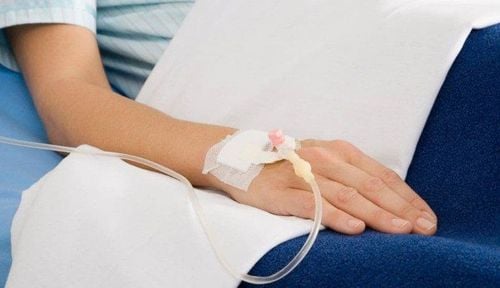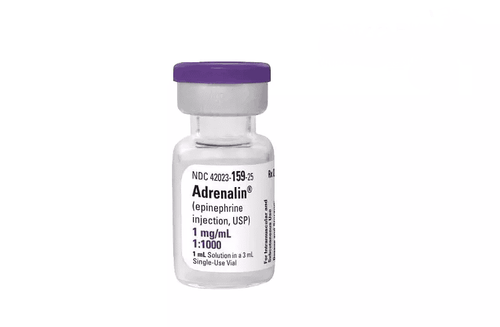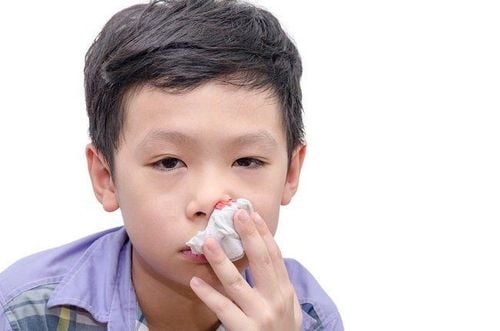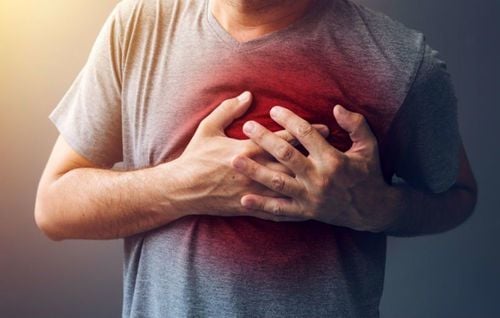This is an automatically translated article.
The article was professionally consulted by Specialist Doctor I Huynh Kim Long - Emergency Resuscitation Doctor - Emergency Resuscitation Department - Vinmec Da Nang International General Hospital.When meeting someone in a traffic accident, most people want to quickly get the patient to the hospital. However, improperly moving an accident patient will in some cases lead to a worse injury. So how to move accident patients as well as give first aid to traffic accident victims properly?
1. Principles of moving accident patients
The correct movement of an accident patient is extremely important in an emergency. In many cases, the injuries of the injured person are more serious due to the wrong way of moving, causing a lot of trouble for the doctor during the treatment process. Here are some guidelines for moving accident patients you should know:Move victims only when absolutely necessary. Pay attention to ensure the safety of the victim and the operator. In case the victim is still conscious, it is necessary to explain to the victim in order to receive the best coordination. Only move victim alone if help is not available. Instruct helpers for effective coordination. When there are many people involved in moving the victim, only one person can command and guide the movement of the accident patient orally. Use proper technique to protect yourself from injury when transporting the victim
2. First aid for people suffering from temporary traffic accidents
Temporary first aid is an important step in the process of first aid in a traffic accident. Proper first aid for traffic accident victims will help stabilize injuries and minimize risks. In fact, many traffic accidents are not life-threatening, thanks to timely first aid, avoiding the most dangerous time. Here are some of the most basic first aid skills you should know:Check the victim's breathing: Check if the patient is still breathing, if there are foreign objects obstructing the airway, it must be quickly Put out. Limit people around to give the patient space to breathe. If the patient is too sick, give them artificial respiration. Stop bleeding for the victim: If too much bleeding is allowed, the victim may go into shock due to blood loss. The patient needs to stop bleeding immediately, can use a clean towel to tie the bleeding area. In some cases, the victim is stuck in the body with a sharp object, and it is absolutely forbidden to pull it out without a doctor's prescription because this has the risk of causing more bleeding. Victims with broken bones: Temporarily immobilize the broken area with wooden or bamboo splints... Limit patient movement to avoid damage to blood vessels, nerves and muscles. Head trauma victim: This is a dangerous injury, do not arbitrarily move the patient, should leave the patient in a ventilated area, keep the patient warm to avoid myocardial infarction. Victim is vomiting, convulsing: Raise the patient's head and loosen clothing and tilt the patient to one side. If the patient has a severe convulsion, the patient should be given something to suck on to avoid biting the tongue.

3. Techniques for moving accident patients by hand
3.1 In case of a rescuer The crutch method : Applied in cases where the victim has only one leg injury such as a soft tissue injury, ligament strain, or heel sprain... the victim is conscious , good cooperation and walkable but difficult.Steps to take include:
Step 1: Help the casualty to stand, grab the casualty's wrist and wrap it around your neck. Note that you should stand on the same side as the injured leg of the victim. Step 2: Wrap your arms around the victim's other waist and grip the waistband of the victim's pants to keep the victim upright while moving. Step 3: Take the first step with the victim's side. Move in small steps and in rhythm with the victim's stride. If possible, use a cane to stabilize the victim; and try to reassure the victim. Pull method: Usually applied in case of a real emergency, just need to move the victim a short distance, the purpose is to quickly transport the victim out of extremely dangerous areas such as fire, explosion...
To perform this method, you sit behind the victim's back then put your hands through the armpits in front, grab the victim's shoulders and then pull the victim back. Use both hands to immobilize the victim's head if injury is suspected. If the victim is wearing a thick and tough shirt, you can grab the victim's shirt by the shoulder to pull it away or put the victim on a tarp, blanket, or sheet to pull him or her away.
Method of piggyback: Apply in case the victim is underweight, alert, cooperative, not injured to the spine, not shocked; No broken limbs, no broken pelvis.
Steps to take include:
Step 1: Raise the casualty to sit up. Step 2: The rescuer sits in front of the victim, with his back to the victim. Step 3: Wrap the victim's arms around the rescuer's neck, one hand of the victim holding the wrist on the other side. Step 4: The rescuer's hands slip under the victim's feet and hold tightly. Step 5: The rescuer spreads his legs with his shoulders, slowly gets up and carries the victim away. Holding method : Applied in case the victim is underweight (eg child), awake, cooperative, no spinal injury, no shock, no broken limbs, pelvis..
Steps are as follows:
Step 1: The rescuer sits next to the victim. Step 2: Put the victim's arm around the rescuer's neck, one hand of the victim tightly grasping the other side's wrist. Step 3: One hand rescues the knee of the victim. The other hand is wrapped around the back of the victim's armpit. Step 4: The rescuer spreads his legs with his shoulders, slowly gets up and carries the victim away. 3.2 In case of two rescuers Cross-seated sitting method: Applied in cases where the victim is awake, cooperative, can sit, has no spinal cord injury, is not stunned, has no limb fractures, pelvis...
Steps to take include:
Step 1: Raise the victim to sit up. Step 2: The two rescuers squatted on either side of the victim, crossed their hands behind their back and grabbed the waistband of the victim's pants. Place your other hand under the victim's knee, one person grabbing the other's wrist. Step 3: Hug the victim tightly, the two rescuers stand up and lift the victim up. Move the victim to a safe area Carrying method: Apply in case the victim has no spinal injury, no shock, no broken limbs, pelvis, no shoulder injury...
Step 1: Raise the casualty to a sitting position. A person sitting behind the victim's back, put his hands under the armpits, tightly grasping the victim's wrists. Step 2: The other person puts his hands under the victim's knees. Step 3: At the same time, two people stand up to lift the victim up. Step 4: Move the victim to a safe area

4. Techniques for moving accident patients by chair
Equipment needed: A booster seat is a chair with castors and a band to tie the victim to the side of the chair. An ordinary chair can be substituted and a large tape or strong rope is used to secure the victim to the arm of the chair.Apply in case: The victim is awake, has no spinal injury, is not stunned, has no broken limbs, pelvis... The victim is comatose, unable to apply other transport methods such as aforementioned, there is no carrier stretcher.
Steps include:
Step 1: Check the stability of the chair before using Step 2: Place the victim in a chair, arms crossed in front, use a large bandage or rope wrapped around the chest and secure the victim to the arm of the chair. Step 3: Two people save, one goes first, one follows. Tilt the seat back. and use both handles to pull the victim away, or carry the victim to safety
5. Techniques for moving accident patients by ambulance stretcher

Patient is in a coma, not awake to coordinate with others Traumatic brain injury, abdominal trauma, trauma chest injury ... Injury to the spine, especially the cervical spine after being fixed with splints. Fracture of femur, leg after splinting to fix broken bone. Multiple trauma, dizziness Transporting patients over long distances. Here are the steps to properly transport the victim onto the stretcher:
Step 1: Three or four people sit on one side or two sides of the victim. Place your hands at the following positions: under the neck, below the back, below the waist, across the buttocks, under the victim's legs. Step 2: Count 1, 2, 3 together, lift the victim and place them on the rescuer's pillow. At the same time, one person places a stretcher under the victim. Step 3: Count 1, 2, 3 and all bring the victim from the rescuer's pillow to the stretcher. Use a rope to fix the victim to the stretcher, to avoid jostling during movement. Attention: the victim's position is always straight, do not bend the spine because it can cause spinal damage to the victim.
How to carry a stretcher:
It can be carried by two or four people, one of which has a commanding role. The victim lies on a stretcher, legs forward, head behind. The carrier near the victim's head must monitor the victim's condition (look at the victim's face). If there is an abnormal state, it must be checked and handled. While carrying the stretcher, do not stop suddenly, or let the stretcher collide with the victim. When carrying a stretcher, regularly keep the stretcher in a level position to avoid falling. If you encounter special terrain such as up or downhill, or obstacles, etc., it is necessary to change the stretcher way to still keep the stretcher in place. equal position. Put the stretcher down gently, before lowering the stretcher, the stretcher bearers should squat. The cases of first aid for patients with traffic accidents require caution, ingenuity, and the right process so that the injury is not more serious. Therefore, knowing the methods of safely moving victims out of the accident scene will help each person have more knowledge to use in emergency situations.
Traffic accidents are often serious cases that can be life-threatening if not diagnosed and treated early. Patients must immediately go to medical facilities for diagnosis and emergency treatment. Vinmec International General Hospital is a prestigious medical address so that patients can completely rest assured for examination and treatment at the Hospital.
The team of emergency doctors and nurses at the Emergency Department are intensively and professionally trained, able to receive and urgently handle severe and critical multi-trauma patients. There is always coordination with all other specialties such as musculoskeletal, spine, chest, abdomen... quickly. There are modern equipment in diagnosis and treatment. Vinmec International General Hospital has given emergency treatment and treated many cases in emergency cases, traffic accidents and injuries, severe blood loss shock. Accordingly, the examination, emergency and resuscitation procedures for patients at Vinmec are all carried out methodically and according to the correct procedure, providing a high treatment prognosis and quick recovery time.
Please dial HOTLINE for more information or register for an appointment HERE. Download MyVinmec app to make appointments faster and to manage your bookings easily.
Reference source: Department of Medical Examination and Treatment - Ministry of Health













